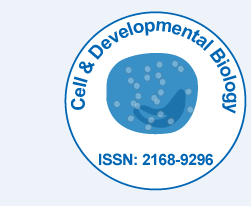
Biologie cellulaire et du développement
Libre accès
ISSN: 2168-9296

ISSN: 2168-9296
Nirmala Mavila, Marie V Nguyen, David James and Kasper S Wang
During organogenesis, the liver develops from the foregut endoderm and grows into the adjacent septum transversum resulting in the formation of the liver bud. Growth factors released from the septum transversum and the cardiac mesenchyme induce endodermal differentiation and proliferation, thus, forming the primordial liver and extrahepatic biliary structures. Endodermal precursor cells within the liver bud comprise bi-potential liver progenitor cells called hepatoblasts, which differentiates into hepatocytes and cholangiocytes. While the postnatal liver has remarkable capacity to regenerate via the proliferation of mature hepatocytes, this compensatory mechanism may be overwhelmed during states of chronic injury. Under these conditions, resident stem/progenitor cells proliferate to replace lost liver parenchyma. Significant progress has been made recently in elucidating the role of various signaling pathways and progenitor cells in liver development and regeneration. In this review, we summarize our recent understanding of progenitor cells in liver development, regeneration and repair.